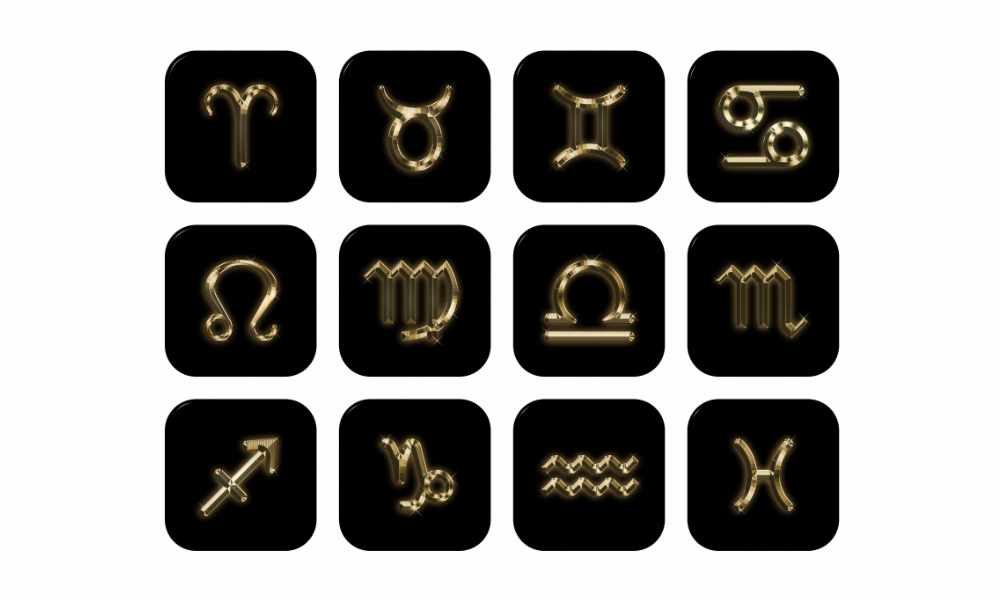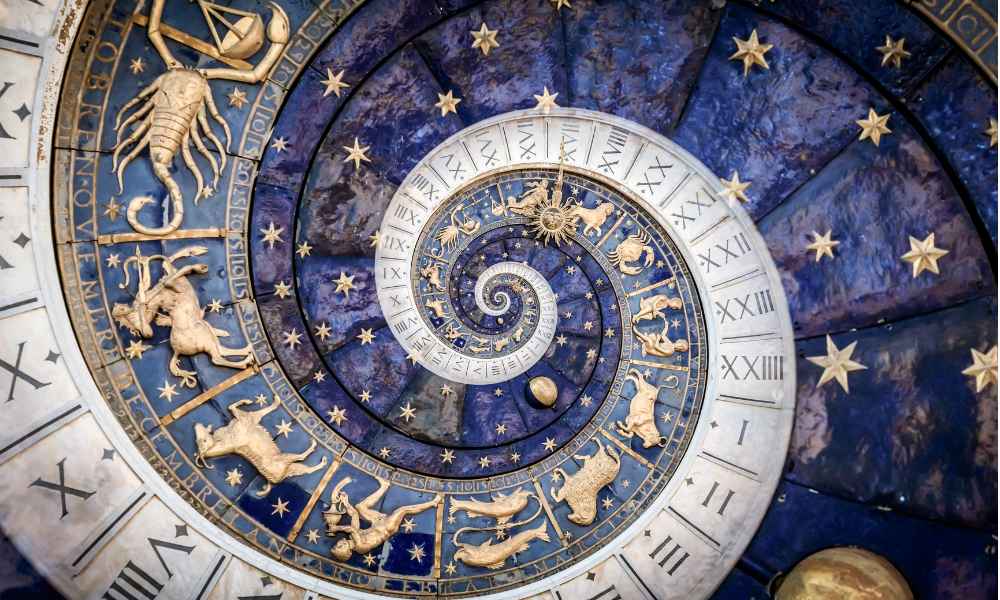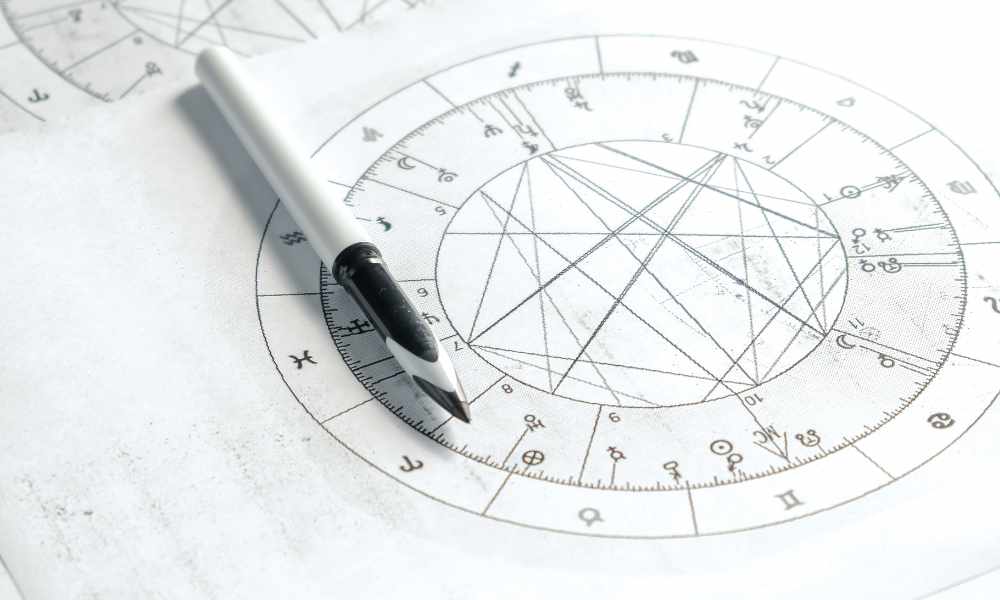
The Classification of the Zodiac Signs in Vedic Astrology
The zodiac signs in Vedic astrology play a very important role in unfolding individuals’ inner or hidden traits. Twelve zodiac signs in astrology provide some general descriptions of the subjects. All individuals come under any of the twelve signs according to their date of birth.
You may be interested to know how the signs in heaven can influence or control the lives on the earth. To understand better, we must know how the signs themselves are characterized.
Here on this page, you will find the signs are further classified into different groups, and each group is related to some characters. Those are the characteristics of zodiac signs. The human beings are also characterized accordingly.
Based on their gender, the twelve astrology signs are divided into two groups:-
Six signs are considered Masculine, and the other six signs are Feminine.
In this context, we should keep in mind that masculine sign does not mean positive or forceful and similarly, feminine are negative and weak. These attributes were given to these signs two thousand years ago. Probably, the astrologers of those days tried to discover the complementary characteristics among the signs. They found some signs are outer-directed and strong through actions; thus, they are masculine, whereas some signs are self-contained and strong through inner reserves and thus are feminine.
Masculine Zodiac Signs
Aries, Gemini, Leo, Libra, Sagittarius, and Aquarius. Feminine signs Taurus, Cancer, Virgo, Scorpio, Capricorn and Pisces.
Feminine Zodiac Signs
Taurus, Cancer, Virgo, Scorpio, Capricorn and Pisces.
Triplicates: Zodiac Signs in Vedic Astrology
The twelve astrology signs are further divided into four groups containing three signs each. Each three-sign group is called a triplicate, and each of these triplicates denotes an element – Fire: Earth, Air and Water. These indicate the fundamental characterization of the sign.

Fire Zodiac Signs
Aries, Leo and Sagittarius, indicating subjects are active and enthusiastic.
Earth Zodiac Signs
Taurus, Virgo, and Capricorn, indicating practical and stable.
Air Zodiac Signs
Gemini, Libra, and Aquarius, indicating intellectual and communication.
Water Zodiac Signs
Cancer, Scorpio, and Pisces - they indicate emotional and intuitive.
Quadruplicates: Zodiac Signs in Vedic Astrology
Twelve astrology signs are divided into three groups, containing four signs each. Each four-sign group is called a quadruplicity, and each quadruplicate denotes a quality. The three qualities are Cardinal, Fixed and Mutable. In astrology, the quality signifies the signs’ interaction with the outer world.
Cardinal Zodiac Signs
Aries, Cancer, Libra, and Capricorn; Cardinal signs are enterprising and outgoing; they are initiators.
Fixed Zodiac Signs
Taurus, Leo, Scorpio, and Aquarius; Fixed signs resist change. They are perfectionists and finishers rather than originators.
Mutable Zodiac Signs
Gemini, Virgo, Sagittarius, and Pisces; they are flexible, versatile and adaptable. They can adjust to different circumstances.
You will notice each of the twelve signs falls into a different combination. No one sign in the zodiac has exactly the same duality, element, and quality as another sign. For example, Leo is a Masculine, Fire, Fixed sign: there is no Masculine, Fire, and Fixed sign in the zodiac.

Zodiac Signs in Vedic Astrology and Polarity
Finally, the twelve signs are divided into six groups containing two signs each. Each two-sign group is called a polarity (meaning opposite). Each sign in the zodiac has a polarity, which is its opposite sign in the other half of the zodiac. The two signs express opposite characteristics.
Aries is the sign of self
Taurus – Personal possession
Gemini – Self-expression
Libra is the sign of partnership
Scorpio – Legacies and shared possession
Sagittarius – Sign of philosophy and higher thinking of expression on a wider level
Cancer – Home life
Leo – Personal pleasure and creativity
Virgo – Work and self-improvement
Capricorn – Public life
Aquarius – Hopes and ideals on a large scale
Pisces – Dreams and self delusion
Property Characteristics of the Zodiac Signs in Vedic Astrology
Earlier, we learned that to understand the zodiac signs and personal traits properly, we must first know how the 12 zodiac signs are characterized or categorized according to their properties.
Here, I shall describe how each 30 degree sign of 12 zodiac signs is again divided into smaller parts to give an accurate and specialized analysis of the sign’s owner.
Often, you may hear people say, “I am a Libra, but many of my characters do not match as described in horoscope pages against Libra.”
Some sort of disbelief arises in their mind about astrology or its related subjects. Why is it so? What we read in the zodiac horoscope is a tiny part of it. Before we know ourselves, we must understand how the zodiac signs are again categorized and how the behavioral pattern changes according to the classification. In the next few lines, you will find how they are classified for accurate predictions or analysis.
I hope the readers of this site will find and know more about the zodiac signs than others and can understand fully how the people on this earth behave according to their signs. The terminology used in this page of the characteristics of zodiac signs may seem unfamiliar to many of you as they are used in Hindu astrology.
Hora in Vedic Astrology
Each sign is further divided into two equal parts or halves called Horas. So, each Hora measures 15 degrees. Who are the owners of this Hora in several Signs? They are divided into only two planets: the Sun and the Moon.
In all the odd signs viz. Aries, Leo: the first Hora is ruled by the Sun and the second by the Moon. In the even signs, this order is reversed, i.e. the first belongs to the Moon and the next to the Sun. Thus, you see that there are 24 Horas in the Zodiac; 12 are ruled by the Sun and the remaining 12 by the Moon.

Drekkana in the Vedic Zodiac
A Sign is again divided into three equal parts of ten degrees each. Each part is named Drekkana or Decante. In each sign, the first Decante is owned by the Lord of the same Sign, the second by the Lord of the 5th Sign, and the third by the Lord of the 9th sign from the original one. For example, in Aries, the first Drekkana is called the Aries itself, and its Lords should be Mars, the second Leo is ruled by the Sun and the third by the Sagittarius, owned by Jupiter. In this matter, you can easily find the decantes of all the Signs or the decantes characteristic of the zodiac sign.
Navasma in Vedic Astrology
A sign is further divided into nine equal parts called Navasma. What is the measure of the Navasma? It is 30 degrees divided by 9. This is equal to 10/3 degrees or 3 degrees and 20 minutes.
Now we must see how these Navamsa are counted in several Signs. In respect of this, we have to make four groups of these Signs, each as follows:
- Aries, Leo, and Jupiter
- Taurus, Virgo, and Capricorn
- Gemini, Libra, and Aquarius
- Cancer, Scorpio and Pisces
In all the Fixed Signs, the Navasma bears the same names and are the first ones; in all the Cardinal Signs, they are the 5th; and in all mutable or common signs, they are the last or 9th. This is the navasma characteristic of the zodiac sign.

Dwadasamsa Zodiac Characteristic
A Sign is further divided into 12 equal parts termed Dwadasamsa, each subdivision getting an angle of 2.25 degrees. There is no complexity regarding the names of these 12 parts, as the Dwadasamsa in each sign begins with the same sign and ends with the one that is 12th from it. That is to say, in Aries, the 12 parts are counted from Aries onwards, ending in Pisces; in Taurus, the first part is Taurus itself and the last Aries and so on. This comes under the Dwadasamsa characteristic of the zodiac sign.
Trisamsa in the Zodiac
This is a one degree position of a Sign. Hence, there should be 30 such parts of degree portions belonging to 30 planets, which is impractical. Their Lords are only the five planets, viz. Mars, Mercury, Jupiter, Venus and Saturn. The Sun and the Moon have no play in this. With regard to the distribution of these Signs, there is a difference with respect to odd and even Signs.
In the odd signs, i.e. 1, 3,5,7,9 and 11, the distribution is as follows: The first 5 degrees belong to Mars, the next 5 degrees to Saturn, the next 8 to Jupiter, the next 7 to Mercury and the last 5 to Venus. In the even signs, this order is reversed: The first 5 degrees go to Venus, the next 7 to Mercury, the next 8 to Jupiter, the next 5 to Saturn, and the Last 5 to Mars.
Author Bio - Jayanti Ghosh and Soumen Ghosh

Embark on a journey of numerological discovery with confidence, guided by our resident numerology experts, Jayanti Ghosh and Soumen Ghosh, recognized authorities in the field. Our content is meticulously curated, drawing from esteemed numerological texts and research. Rigorous fact-checking and peer reviews ensure the utmost accuracy and reliability. We are dedicated to transparently sharing the sources of our numerological knowledge, promoting a culture of trust and authenticity. You’re in the hands of a trusted expert, exploring the profound realm of pinnacle numbers with certainty.
Learn More About Vedic Astrology

History of Vedic Astrology
Three main branches of Astrology exist to date. Though there are a few more, people are mostly familiar with the names of Western, Indian, and Chinese Astrology. We find the presence of it for the first time in Mesopotamia and the Babylonia (then Chaldea) in and around 3600 B.C. In that era, the subject was being used to predict or forecast the weather or the possibility of disaster and even to find the chances of wars that might occur in the future.

Vedic Astrology Basics
People interested in studying or learning about astrology basics generally need help understanding all the words found on the pages, either on a website or in related books. There are many terminologies used in astrology basics which are not found in the lexicons that we commonly use in our day-to-day life, and even if the words are available, you will find the meanings described from an astronomical point of view rather than an astrological one. It may cause problems, when you study your natal chart prepared by an astrologer.

Significance of the Planets
In Vedic astrology, the significance of planets is paramount as they play a pivotal role in shaping the course of an individual's life. Each planet represents specific qualities, energies, and influences that contribute to the overall astrological profile. The positions of these celestial bodies at the time of one's birth are meticulously analyzed to derive insights into personality traits, relationships, career paths, and various life events. The nine planets, or Navagrahas, are considered cosmic forces that exert both positive and challenging influences, guiding individuals on their karmic journey.

Understand a Vedic Natal Chart
The horoscope or astrology natal chart, astrology birth chart, or astrology chart is a diagram which reflects the picture of the relevant celestial bodies at the time of one’s birth. It shows in which signs the nine planets were positioned at that particular time and place. It also states another important aspect of astrology called the Lagna or Ascendant. The astrology chart plays a significant role in analyzing an individual’s life. The ascendant is calculated based on one’s place and time of birth. The ascendant is your individual 1st house and may fall in any of the 12 signs. From there, the other houses are marked.

